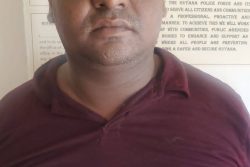Dear Editor,
President Bharrat Jagdeo’s national popularity with the masses has integral connections not only with the massive rebuilding of Guyana’s infrastructure, sustaining macroeconomic fundamentals, piloting Guyana through massive debt write-offs, carving out the huge funding potential of the Low Carbon Development Strategy (LCDS), securing an international niche for Guyana, inter alia; but primarily, too, because this President believes that he should be on the front lines with the people, not only in good, but in bad times as well.
And the recent CADRES’ poll release indicating that Guyana was a high performer in rebuilding infrastructure is not surprising. Note the World Bank Report 1994 which stated that real GDP rose by a mere average of 0.4% per year between the late 1960s and mid-1988. In fact, economic performance degenerated in the 1980s, where high poverty levels were the norm in the late 1980s through early 1990s, prompting the World Bank Report 1994 to note “The Government’s capacity to deliver essential services has virtually collapsed. Infrastructure remains severely dilapidated. The supply of potable water is limited to a small proportion of the population, drainage and irrigation systems have deteriorated to the point that they are no longer useful, and health and education services have become so inadequate that social indicators for the country have fallen to among the lowest in the Caribbean.”
But much of this infrastructure rebuilding had to do with the President being on the front lines for the masses both at home and abroad, eking out funding sources when financial viability threatened to stagnate any kind of progressive development on the home front.
You will recall that it was just after the New Year 2005, there were unrelenting heavy downpours; the great flood was upon all Guyanese. And then the usual political suspects of divisiveness wailed, snivelling that politicians should not be on the front lines of this flood – meaning President Bharrat Jagdeo and his governmental entourage.
People may recall, too, that four days after Katrina struck New Orleans in the US on August 26, 2005, no command and control were in place. The Pentagon claimed that enough National Guard troops were in the region, when the reverse was true; Dr Max Mayfield of the National Hurricane Center on August 28 warned President Bush that the levee could be topped; Governor Blanco made repeated requests for federal assistance from Bush; 6 days after Katrina, Bush gave the first major address to the nation; the President made his first visit to the devastated areas of New Orleans on September 2, almost 8 days after Katrina. Americans wanted their President on the front lines, but Bush was on the missing list.
And today in the US in the face of probably the worst environmental crisis in American history, that is, the BP oil spill in the Gulf of Mexico, President Barack Obama learnt well the lessons of the Bush ‘distance behaviour’ during Katrina. Obama already made three substantial visits to the states in the Gulf region and held countless tête-a-têtes with the people and other stakeholders at ground zero. This is good presidency at its best, and Jagdeo demonstrated this front-line approach with the masses with alacrity very early on in his administration.
These comparisons are intended to demonstrate the need for conspicuous presidential and governmental leadership through attitude and behaviour in the face of any crisis. President Jagdeo accomplished this feat; he did the right thing in the great flood of 2005, a disaster by any standards. The rainfall recorded from January 1 through January 20, 2005 alone was 34.3 inches, breaking all records since 1888. This disaster could have deepened; the government’s quick response made a significant difference to what could have been; the President’s leadership and take-charge attitude and behaviour penetrated the ‘eye’ of the flood.
The President and ministers of the government are representatives of the people; reaching the people at all times must be mandatory and be their forte too. And being with the people is an enhancer for politicians to clearly see the people/development connection.
Yours faithfully,
Prem Misir





